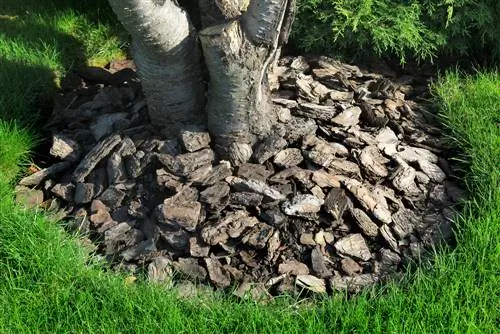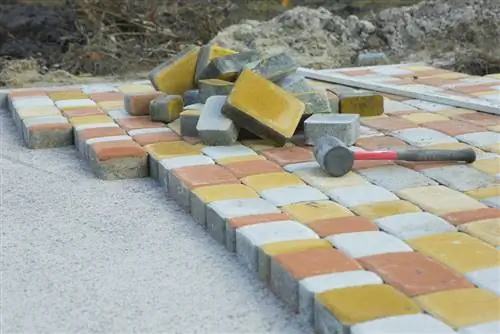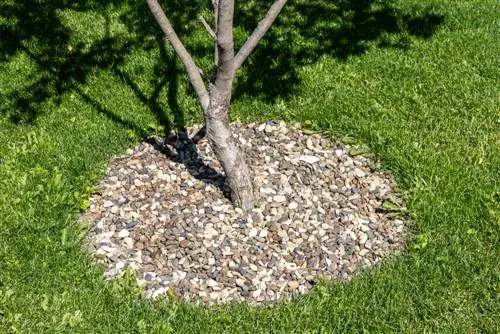- Author admin [email protected].
- Public 2023-12-16 16:46.
- Last modified 2025-06-01 06:02.
A tree slice that has been swept empty makes no significant contribution to imaginative garden design. With simple means you can transform the free area into a decorative eye-catcher without coming into conflict with the roots. This collection of ideas shows creative options for covering tree slices.

How can I cover a tree slice in an attractive way?
To effectively cover a tree slice, natural materials such as bark mulch, green waste or plants such as Balkan cranesbill are available. For tree sections that can be driven on, grass paving stones or small paving stones offer a good solution.
Close to nature and revitalizing - mulch as a cover
A variety of natural materials are suitable for covering a tree disc. As a beneficial side effect, valuable nutrients reach the tree roots this way when the mulch decomposes. The following options are inexpensive or free and in harmony with nature:
- Grass clippings, nettle leaves, autumn leaves, straw
- Bark mulch, wood chips or colored pine bark
- Slices made of coconut or vegetation-inhibiting cardboard
Bark mulch leads the ranking undisputedly. It is important to note that the pieces of bark initially remove nutrients from the soil. A layer of sifted compost and horn shavings (€52.00 on Amazon) should therefore be spread under the cover.
Floral root bridge sets accents - tips for underplanting
When covering with mulch, gardeners often struggle with bold weeds that still get their way. Underplanting with ground cover has emerged as a sensible and decorative alternative. Since difficult conditions prevail on a tree slice, the following species come into focus for planting:
- Shade-tolerant plants, such as Balkan cranesbill (Geranium macrorrhizum) or dwarf hostas (Hosta minor)
- Root pressure-tolerant plants, such as periwinkle (Vinca minor) and elfflower (Epimedium)
- Generalists, such as ivy (Hedera helix) or creeping honeysuckle (Lonicera pileata)
Road-ready covers - stylish options
The biggest challenge is a cover if the tree disk has to be accessible and can be driven over. Sealing with asph alt and concrete is taboo here because the roots are cut off from the water and oxygen supply. You can solve the problem with lawn pavers made of concrete or plastic. The positive and non-positive connection of individual grid elements ensures an even distribution of loads. At the same time, the water supply and ventilation of the roots is ensured.
In farmhouse and country house gardens, disused small paving stones can be used to cover tree slices. With a little manual skill you can lay the stones yourself. A base layer made of gravel and sand provides the necessary stability so that even a heavy riding mower can drive over the cover.
Tip
If you create a tree disc after planting, it makes sense to cover it in the form of ground cover, grass trellis or paving stones after 5 years at the earliest. In their first few years, young trees lack the potential to successfully assert themselves against root competition and root pressure.






